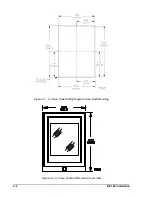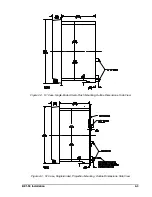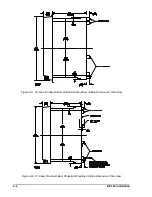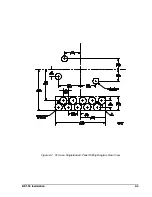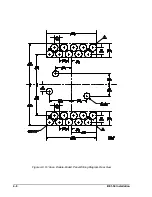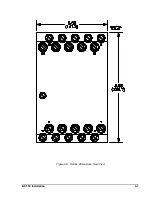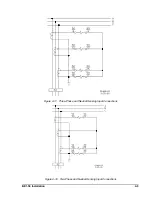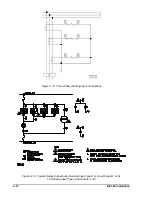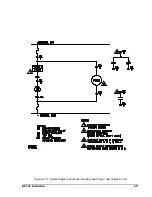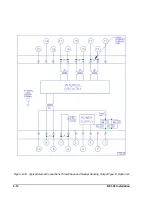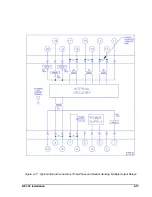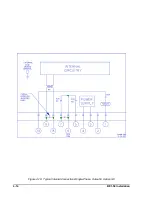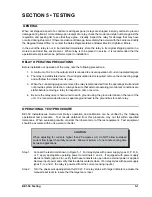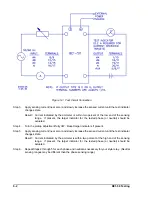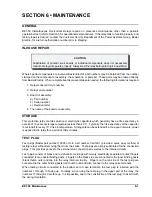
BE1-50 Testing
5-1
CAUTION
When adjusting for currents higher than 20 amperes AC, do NOT allow sustained
current flow longer than thirty seconds. Allow a minimum of one minute cooling time
between applications.
SECTION 5 • TESTING
GENERAL
When not shipped as part of a control or switchgear panel, relays are shipped in sturdy cartons to prevent
damage during transit. Immediately upon receipt of a relay, check the model and style number against the
requisition and packing list to see that they agree. Visually inspect the relay for damage that may have
occurred during shipment. If there is evidence of damage, immediately file a claim with the carrier and notify
the Regional Sales Office, or contact the Sales Representative at Basler Electric, Highland, Illinois.
In the event the relay is not to be installed immediately, store the relay in its original shipping carton in a
moisture and dust free environment. When relay is to be placed in service, it is recommended that the
operational test procedure be performed prior to installation.
RELAY OPERATING PRECAUTIONS
Before installation or operation of the relay, note the following precautions:
1. A minimum of 0.2 A in the output circuit is required to ensure operation of current operated targets.
2. The relay is a solid-state device. If a wiring insulation test is required, remove the connecting plugs
and withdraw the cradle from its case.
3. When the connecting plugs are removed the relay is disconnected from the operating circuit and will
not provide system protection. Always be sure that external operating (monitored) conditions are
stable before removing a relay for inspection, test, or service.
4. Be sure the relay case is hard wired to earth ground using the ground terminal on the rear of the
unit. It is recommended to use a separate ground lead to the ground bus for each relay.
OPERATIONAL TEST PROCEDURE
BE1-50 Instantaneous Overcurrent Relays operation and calibration can be verified by the following
operational test procedure. Test results obtained from this procedure may not fall within specified
tolerances. When evaluating results, consider the inherent error of the test equipment. Test equipment
should be accurate within one percent or better.
Step 1.
Connect the test circuit shown in Figure 5-1. For relay styles with power supply types O, P, R, S,
or T, apply appropriate operating power to terminals 3 and 4. If equipped with power supply
status contacts (option 3-6), verify that these contacts are open when external power is applied.
Remove input power and verify that the status contacts close. (For relay styles with power supply
types F, G, and H, the relay is powered from the current sensing inputs.)
Step 2.
Turn the phase pickup adjustment full CCW. For relay styles with target indicators, actuate the
manual reset lever to insure that the targets are reset.
Summary of Contents for BE1-50
Page 1: ... 05647 6 10 07 14 056 06 0 175 18 4 744 06 4 Publication 9 1710 00 990 Revision C 11 98 ...
Page 5: ...iv BE1 50 Introduction CONTENTS Continued SECTION 7 MANUAL CHANGE INFORMATION 7 1 Changes 7 1 ...
Page 12: ...2 2 BE1 50 Human Machine Interface Figure 2 1 Location of Controls and Indicators ...
Page 20: ...BE1 50 Installation 4 5 Figure 4 7 S1 Case Single Ended Panel Drilling Diagram Rear View ...
Page 21: ...4 6 BE1 50 Installation Figure 4 8 S1 Case Double Ended Panel Drilling Diagram Rear View ...
Page 22: ...BE1 50 Installation 4 7 Figure 4 9 Outline Dimensions Rear View ...


